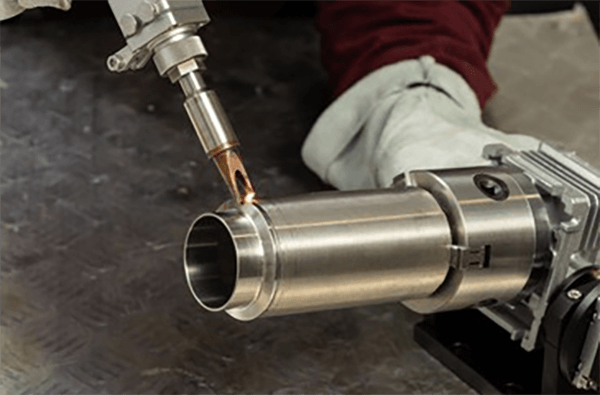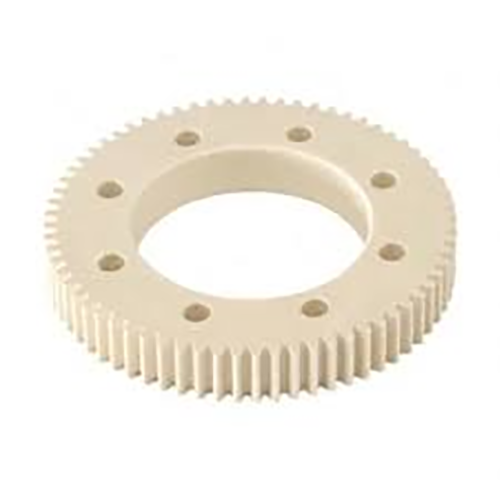
Producing the required exterior polish for a processed workpiece is of paramount importance.
- Technical drawings lay out precise surface criteria for components
- Drawings commonly cite Ra, meaning root mean square average, to measure texture
- Grasping callout meaning is essential to make parts conform to design intent
- Specified texture can change lubrication regimes, frictional forces, and endurance
- It is essential to interpret the specific callout to achieve the desired outcome
Defining Precision in CNC Machining

Robotic-assisted machining defines a modern manufacturing practice with programmed toolpaths the apparatus generates complex components precisely.
- Computer-driven machining creates reliable parts from assorted materials
- Adaptable CNC processes fit the demands of aerospace, automotive, and medical markets
- Numerical control systems guarantee repeatable accuracy between batches
From small prototypes to large-volume runs CNC machining performs a central function in today's manufacturing landscape
CNC Specs Explained
Interpreting CNC data often seems complex on first review
Even so practical familiarity and a systematic plan enable decoding machine specs
Start with locating core parameters: spindle rpm, feed, accuracy, work envelope, controller
Each of these specifications contributes to the machine's overall performance.
By way of example raised spindle rpm benefits soft stocks while boosted feed enhances output.
Perceiving such relations guides selection of appropriate CNC equipment
Take time to inspect maker literature meticulously.
Manufacturer docs typically supply key details and decode technical phrasing
A Guide to CNC Machines: What You Need to Know
CNC machines are specialized computer-controlled systems used in manufacturing for precise and automated fabrication of various materials They operate by interpreting digital instructions called G-code to control cutting tools or other actuators.
- Common CNC classes include milling machines, turning lathes, routing systems, plasma cutters
- Machining methods apply across metals, plastics, wood, and composite substrates
- Furthermore CNC machines allow for rapid prototyping and low-volume production runs making them valuable assets for small businesses and research centers
Overview of CNC Machine Fundamentals
CNC machines represent a remarkable fusion of mechanical precision and sophisticated software control Automated tools implement code to produce elementary parts and sophisticated assemblies The fundamental principle behind CNC machines is the translation of digital designs into physical forms.
- Computer Numerical Control machining
- Programmed manufacturing process
It performs sequenced precise axis operations dictated by program Engineers contribute by setting machining variables, overseeing runs, and assuring product standards.
Why Surface Finish Matters in CNC Machining
Obtaining required finish during machining is essential It significantly alters operational behavior and appearance The type of material being machined the cutting parameters used and the post-processing operations all contribute to the achieved surface texture.
Superior polishing extends service life; rougher finishes may limit capability Code-driven machining enables selective tooling and techniques to attain required textures.
- As an example choosing diverse tool geometries |carbide alloys|cutting speeds to achieve a desired surface finish
- Also surface treatments such as grinding and polishing can refine textures
Understanding parameter influences helps attain the desired surface quality.
CNC Machine Basics: From Operation to Applications
Programmed machining provides accurate part shaping across multiple material types They apply digital directives to fabricate detailed geometries consistently Knowing programming basics and tool selection secures better machining outcomes
Applications of CNC machining are incredibly diverse spanning numerous industries such as aerospace automotive manufacturing From aircraft parts to precision plastic molds, CNC creates complex high-quality items
Surface Finish Callouts for CNC Machined Parts
Clear finish definition is critical for CNC machined components It makes sure the product satisfies function and aesthetic demands Drawings usually depict finish requirements with Ra roughness values Noted in microns or millimeters, the value quantifies average texture height.
Factor in desired smoothness and the component’s functional purpose when setting finish callouts

For instance a smooth surface finish might be preferred for parts that require tight tolerances or precise alignment
Rugged finishes sometimes serve parts that need enhanced traction or grip
Apply clear finish annotations in technical drawings to state desired texture Include both the Ra value along with any additional instructions such as machining processes or surface treatments.
Note that precise surface specifications contribute directly to production success
Kinds of CNC Machines and Their Strengths
CNC machining spans many technologies and machine classes to address different operational needs They integrate CAD-driven toolpaths to guide cutters for precise component production.
- Mills shape slots pockets and complex contours through rotary cutting
- Turning machines rotate stock to create symmetrical components efficiently
- Plasma cutters employ ionized gas arcs to sever metal quickly and accurately
Decision factors include the part’s material, feature complexity, and tolerance specifications Distinctive CNC features make these machines indispensable across multiple industries.
Securing Optimal Finish Using CNC Machining
Achieving a superior surface finish is crucial in numerous manufacturing processes and CNC machining offers an exceptional method for achieving this goal Through careful tuning of feeds speeds and tool profiles operators manage chip formation and surface generation In addition top-grade tooling and adequate lubrication help generate finer surfaces Optimized cutting plans and meticulous setup procedures help achieve premium finishing.
Programming for Surface Finish in CNC
Achieving intended surface characteristics through programming is vital for quality Selected feeds speeds and tool geometry directly shape the resulting surface profile Exact parameter choices plus proper fluid management achieve refined finishes.
- Besides that systematic tool upkeep and monitoring define cnc machine ensure sustained surface quality Furthermore regular tool maintenance and inspection are essential for ensuring a consistent and high-quality surface finish over time Moreover scheduled tool maintenance and inspection preserve surface performance
- To improve surface outcome account for material, roughness target, and application
- Virtual simulation provides a way to optimize feeds and speeds before cutting
- Additionally routine tool checks and upkeep maintain consistent finish quality
